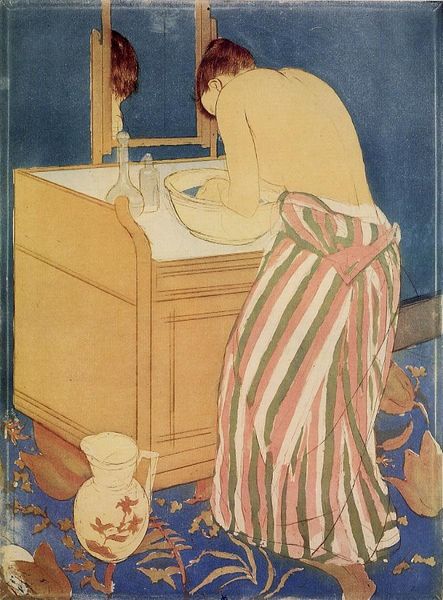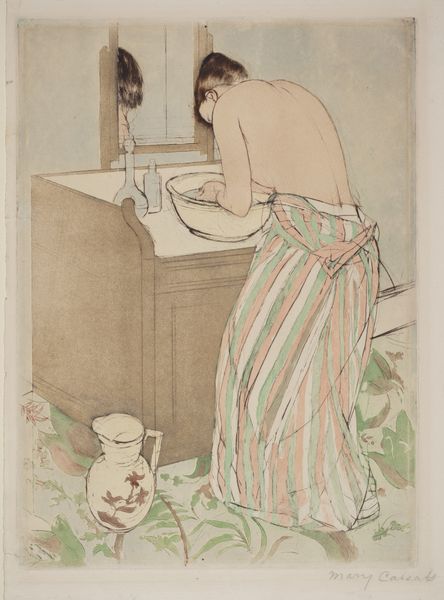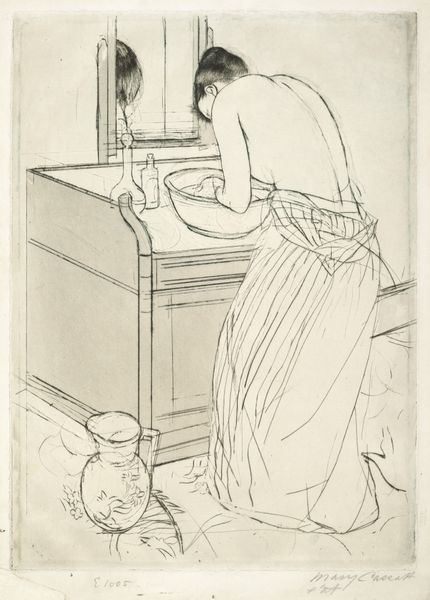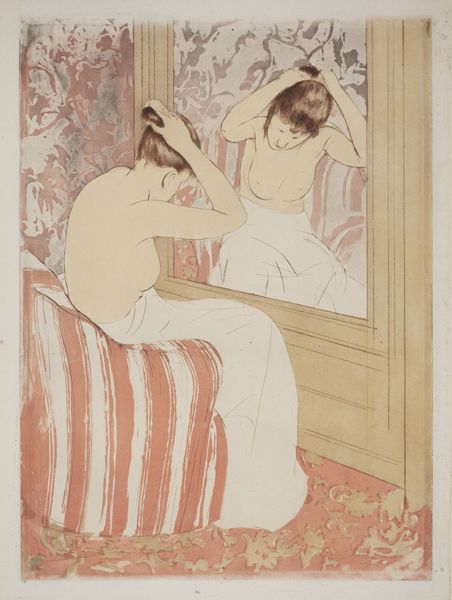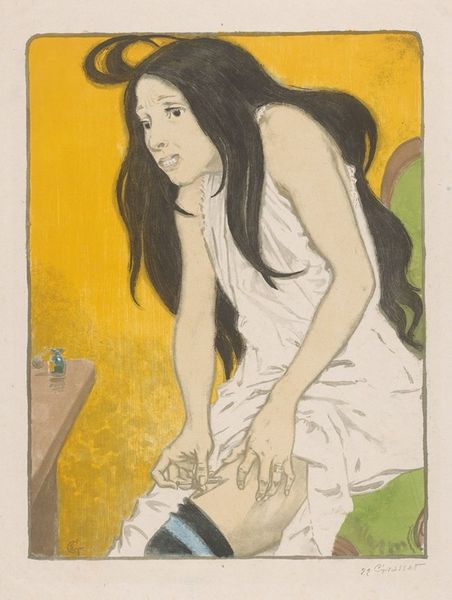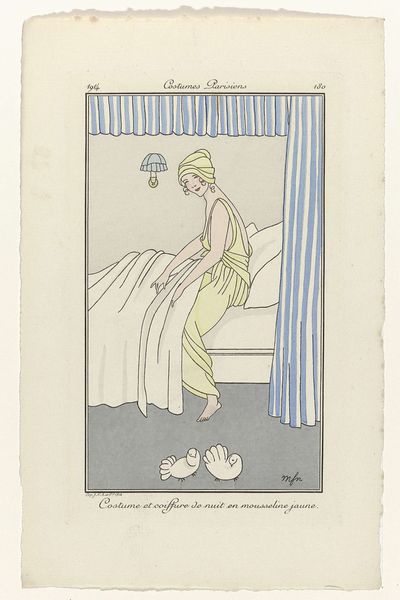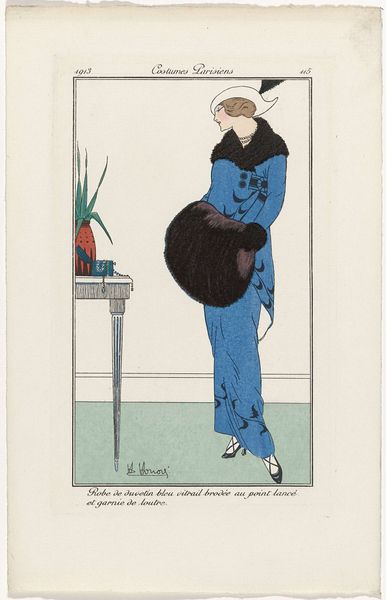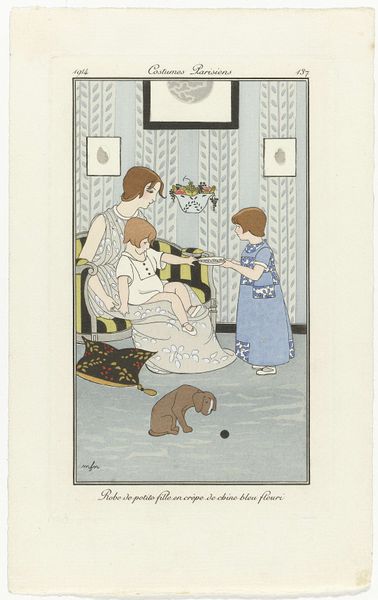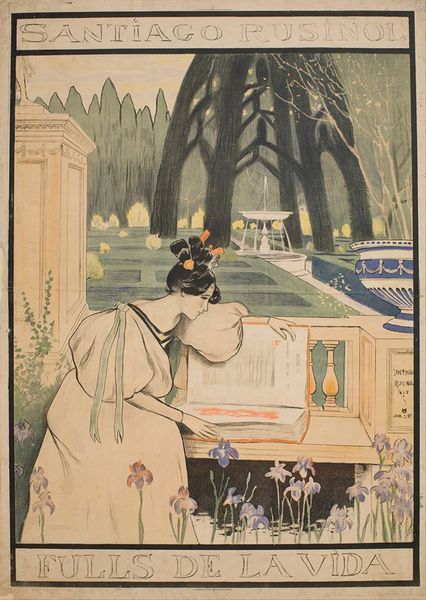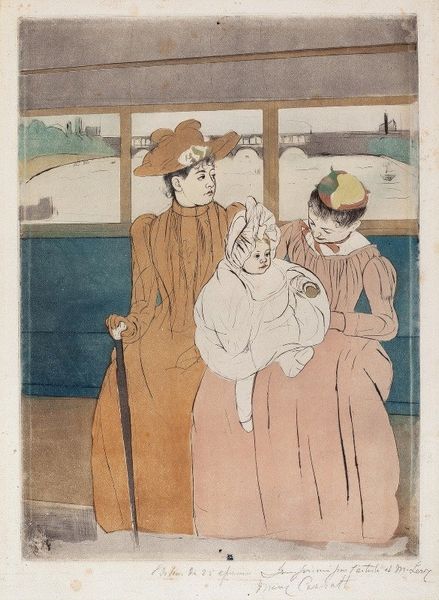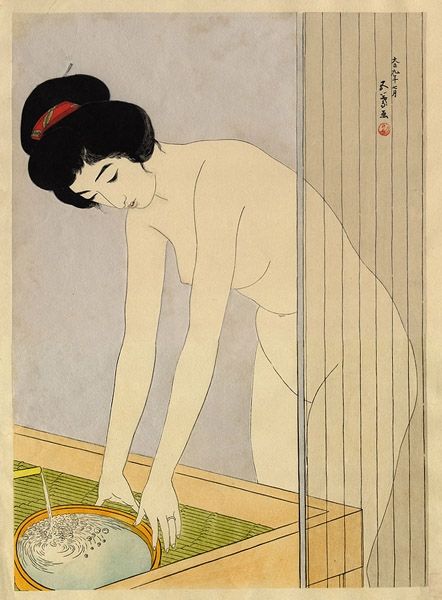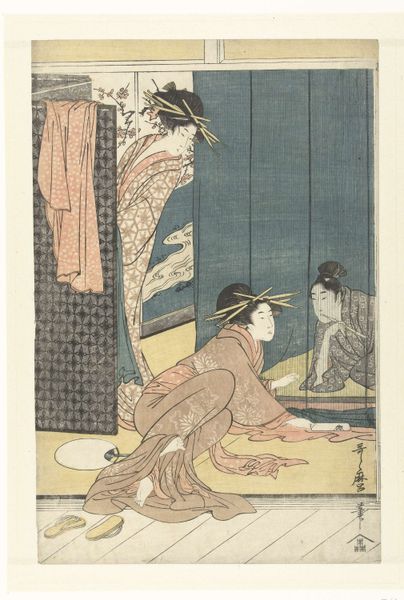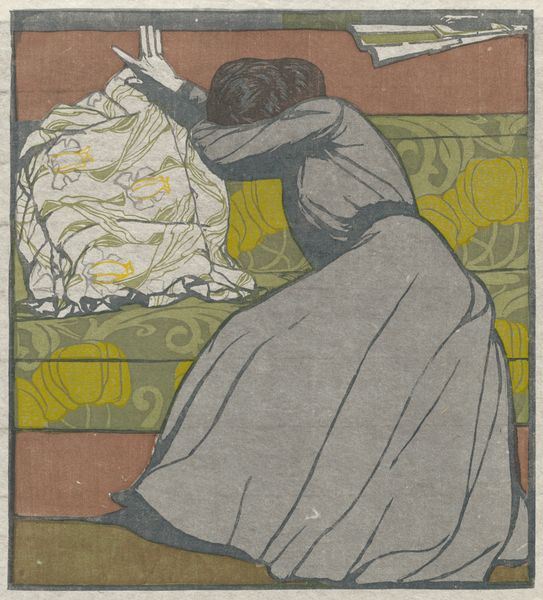
painting, watercolor
#
portrait
#
painting
#
impressionism
#
figuration
#
watercolor
#
genre-painting
#
watercolor
Copyright: Public Domain: Artvee
Curator: Let's turn our attention to "Woman Bathing," created between 1890 and 1891 by Mary Cassatt, a beautiful example of her work in the Impressionist style. It looks like watercolor on paper. What strikes you first about this work? Editor: The immediacy of it. The informal pose, the intimacy... it feels incredibly candid, almost like a snapshot, not a posed portrait. The cool blues contrast so sharply with the woman's bare skin. Curator: Cassatt often focused on the domestic lives of women, and this work fits perfectly into that context. During this period, there was a surge of interest in Japonisme in Western art. You can really observe this fascination in the flat planes and bold use of pattern in this watercolor. Editor: The stripes in the figure's wrap are wonderfully chaotic, in opposition with the more stolid and symmetrical structure of the vanity and mirror behind the subject. The pitcher seems rather whimsical and ornamental sitting below a piece of furniture with rather harsh angles. Curator: I think Cassatt, as a female artist in a male-dominated art world, consciously chose women as her primary subjects. These images can be interpreted as asserting a woman's perspective and agency in a world that often overlooked them. She offers these quiet, intimate moments of women's daily lives. It really resonates even today. Editor: Looking at this, I also wonder if the artist deliberately obscured the bather's face. There is enough detail in her hair and in the mirror's reflection for me to consider this absence a purposeful composition, removing the subject's personality and individuality for the benefit of her simple domestic routine. Curator: Absolutely. And through that universality, the woman in the scene gains even more representative power of a demographic during this period. We can use this image to examine gender, class, and even the simple ideas of self-care, independence, and privacy during this era. Editor: It’s intriguing how much narrative potential Cassatt packs into such a visually simple and intimate setting. I feel I understand a new and nuanced approach to watercolor now, and maybe that says everything. Curator: Indeed. Cassatt’s artistic choices provide a lot to think about regarding the roles of women, the gaze in art, and Impressionism's broader socio-cultural influences, especially regarding Japanese influence in composition. It's an incredible example of that cross-cultural intersection.
Comments
No comments
Be the first to comment and join the conversation on the ultimate creative platform.
